Disclaimer: As an Amazon Associate I earn from qualifying purchases. Therefore, we may collect a share of sales from the links on this page, at no extra cost to you!
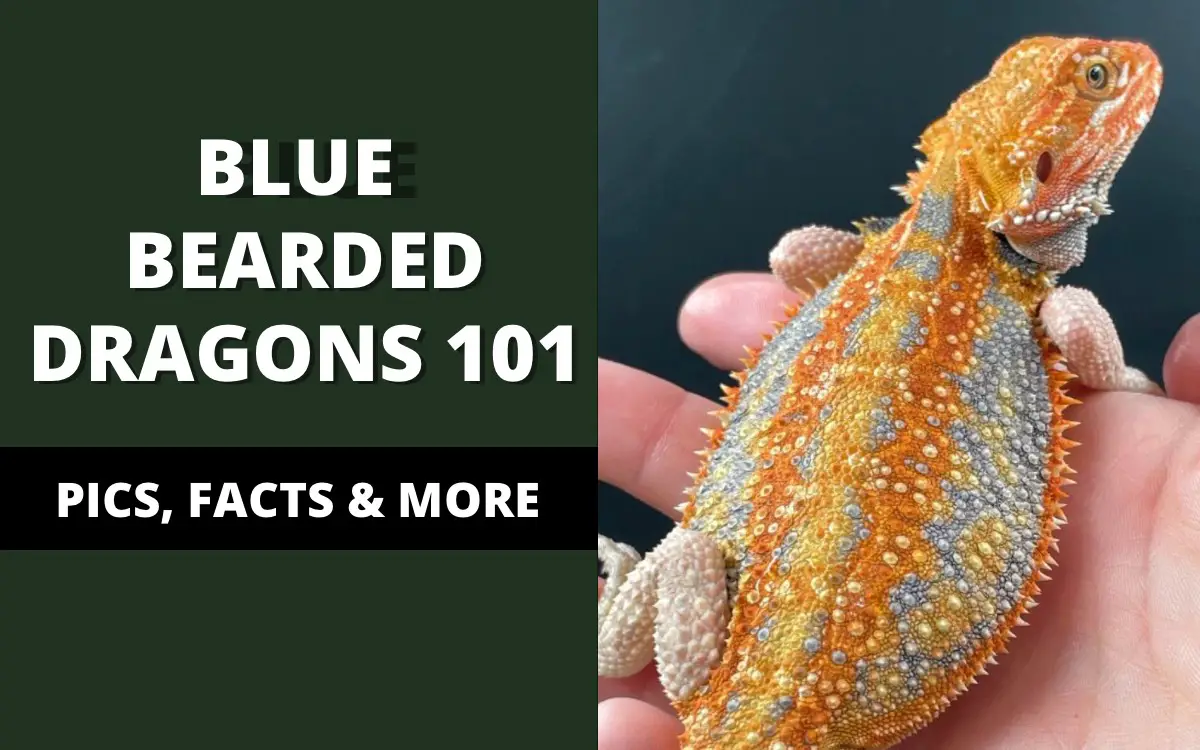
The glorious blue bearded dragon. Is it real, or is it just a fictional creature rumored around the internet?
We’re all aware of your typical bearded dragon colors. From white, brown, grey, orange, yellow, and red, there’s no shortage of colorful beardies. However, you don’t see too many colors beyond those few.
The truth is, bearded dragons can be blue. However, it’s extremely rare, and few people own one of these rare reptiles.
So, let’s take a closer look at blue bearded dragons and explore their genetic makeup, where you can buy one, and pictures of what they look like.
We’ll also check out other genetic traits that affect a bearded dragon’s appearance.
Jump to..
What is a Blue Bearded Dragon?
Okay, let’s backtrack for a second. Before we get your hopes high, it’s important to note that bearded dragons are never entirely blue. The bright blue bearded dragon pics you see on Google are Photoshopped.
Instead, they usually have blue accents within their pattern. It’s much more subtle than you would think.
Often, the blue coloring will be surrounded by another color, such as orange or yellow. Furthermore, the blue coloring almost always goes down the back in a symmetrical fashion.
In the reptile breeding industry, bearded dragons with this blue color trait are known as blue bar bearded dragons. This is because the blue is usually in a bar-like shape.
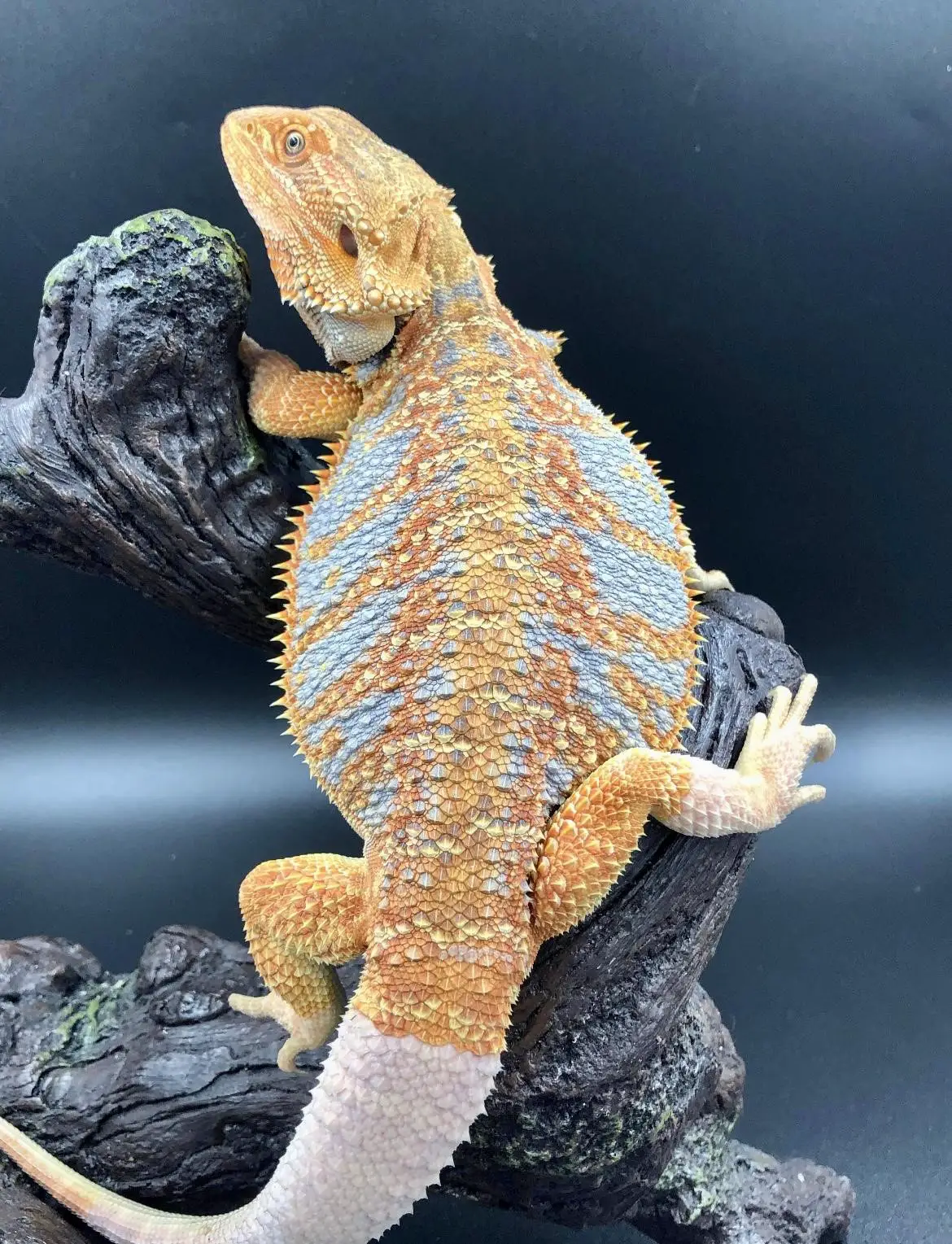
History of Blue Bearded Dragons
The blue bearded dragon doesn’t constitute a morph. Instead, it’s a genetic trait that accompanies a morph.
Therefore, it’s not uncommon to see a blue bearded dragon for sale that is labeled something along the lines of “Citrus Bearded Dragon with Blue Bars.” This will be an orange bearded dragon with blue stripes down its back.
The blue bar trait is highly sought after, and bearded dragons that have it are usually more expensive than those that don’t. Furthermore, a bearded dragon with a lot of blue in its pattern will be more expensive than a beardie with a small amount of blue.
More: See our article on black bearded dragons
How Much Does a Blue Bearded Dragon Cost?
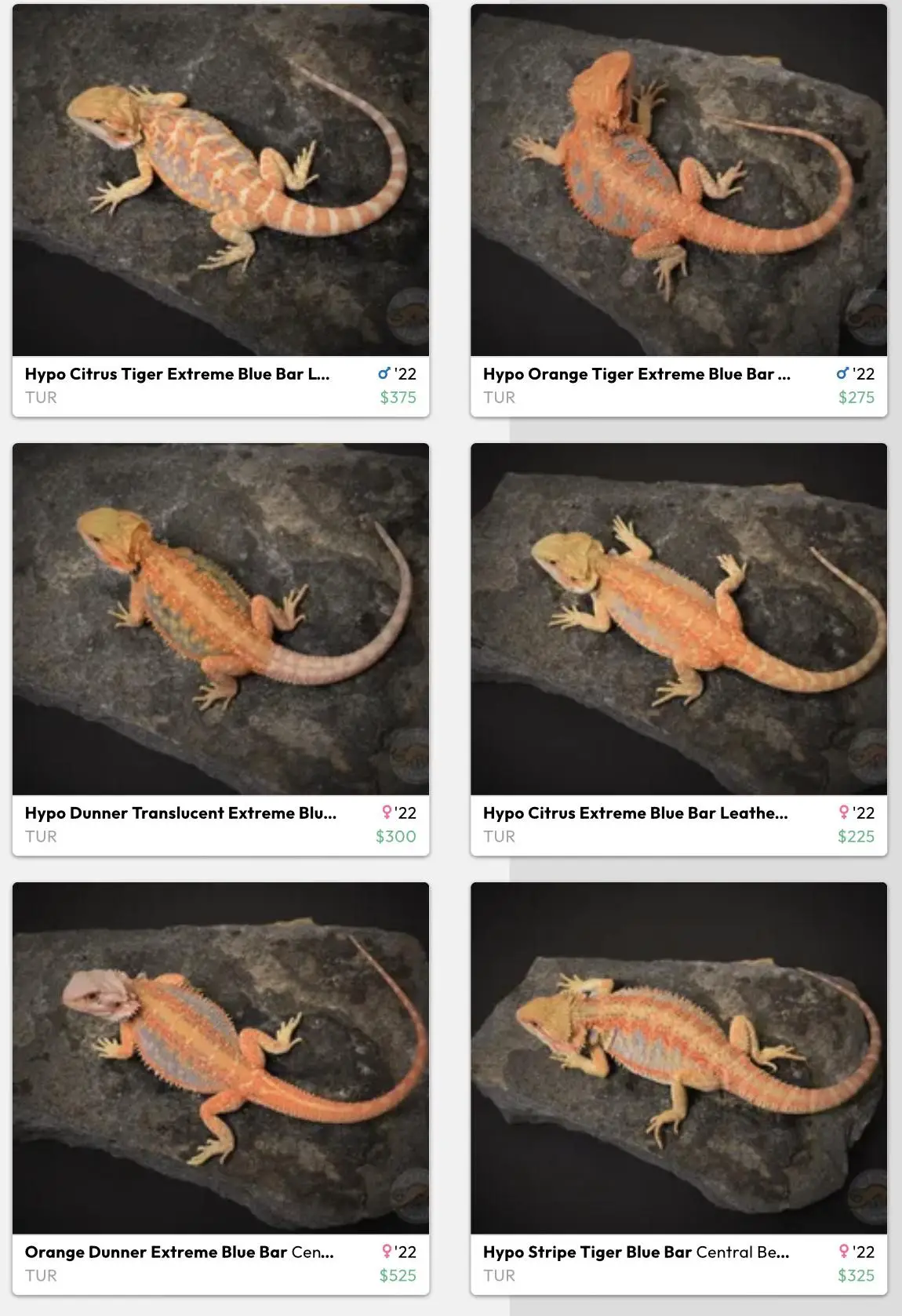
Breeders are constantly trying to create the bluest bearded dragon. This is because this genetic trait is considered particularly rare, and many reptile enthusiasts are willing to pay hundreds of dollars for this rare coloration.
A prominent blue bearded dragon will run upwards of $1,000. However, you can usually expect to pay around $200, depending on several factors. Some of these factors include:
- Morph (i.e., citrus, tiger, red, etc.)
- Other genetic traits (i.e., hypomelanistic, translucent, stripe, leatherback, dunner, etc.)
- Age (adult dragons tend to be higher in cost)
- Breeder (some breeders charge more than others)
Keep in mind, adult dragons tend to cost more because their color is fully developed. Baby bearded dragons often change color as they age, although it’s usually not drastic. Therefore, a baby blue bearded dragon may change shade as it gets older.
Where to Find Blue Bearded Dragons For Sale
Not every breeder sells blue bearded dragons. Plus, you’re unlikely to find a blue bearded dragon for sale at your local pet shop. This trait is relatively rare, and only a few select online breeders carry them.
Below is a list of some of the top blue bearded dragon breeders in the US.
CBReptiles

CBReptiles is one of the most popular online breeders in the United States, and there’s a good reason for that. They have some of the highest breeding standards for bearded dragons, and they offer a variety of gene variations and morphs.
Some of their selections include red, hypo, citrus, trans, inferno, witblit, blue bar, and more. With over 25 years of breeding experience, you can be sure that you’re getting a healthy reptile when you purchase from CBReptiles.
Morph Market

Morph Market has a massive selection of different bearded dragon morphs. Fortunately, blue bearded dragons are one of their specialties.
The great thing about Morph Market is they almost always have different bearded dragons for sale. Some breeders only sell bearded dragons during the summer or a specific time of year. However, Morph Market sells year-round.
Big Apple Herp

Big Apple Herp is another established reptile breeder in the North East United States. They’ve extensively researched bearded dragon breeding and have the selection to prove it.
Big Apple Herp has a wide range of bearded dragons, although many of them are unavailable due to their popularity. Therefore, if you’re on the hunt for a blue bearded dragon, you may have to wait a while. We recommend sending them an email asking when they expect to have more blue bar beardies.
Bearded Dragon Genetic Traits
Translucent
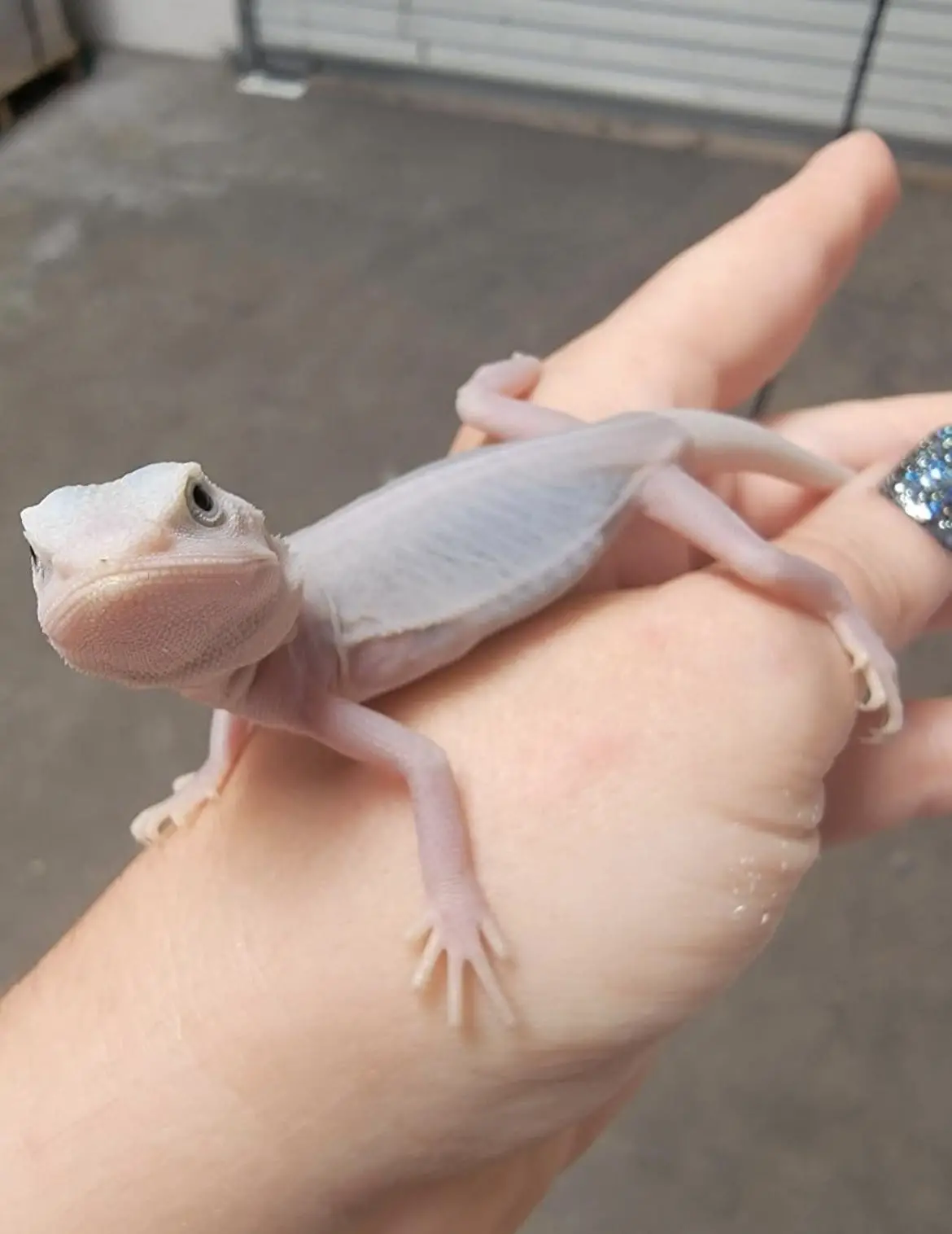
Translucent, or trans bearded dragons, are bred by mating two trans bearded dragons.
These bearded dragons are distinct due to their completely black eyes and translucent skin. In fact, their color is usually influenced by their internal organs and blood. This can cause them to have a blue hue to them.
Hypomelanistic
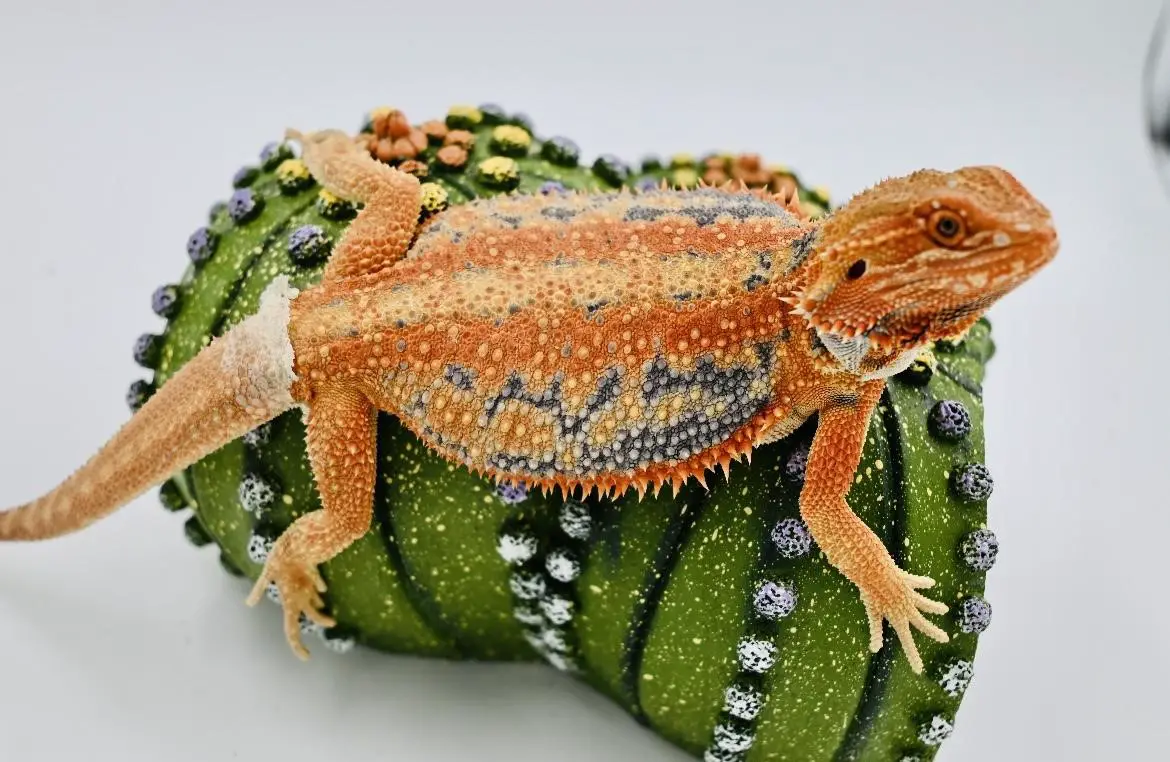
Hypomelanistic, also known as hypo bearded dragons, are bearded dragons that lack melanin. Melanin is the same pigment that occurs in the skin, hair, and eyes of humans that affects color.
Similar to humans, bearded dragons also have melanin, with the exception of hypo’s. Hypo bearded dragons are typically darker in color/pattern. Furthermore, hypo bearded dragons have clear fingernails, whereas bearded dragons with high melanin content have black fingernails.
Leatherback
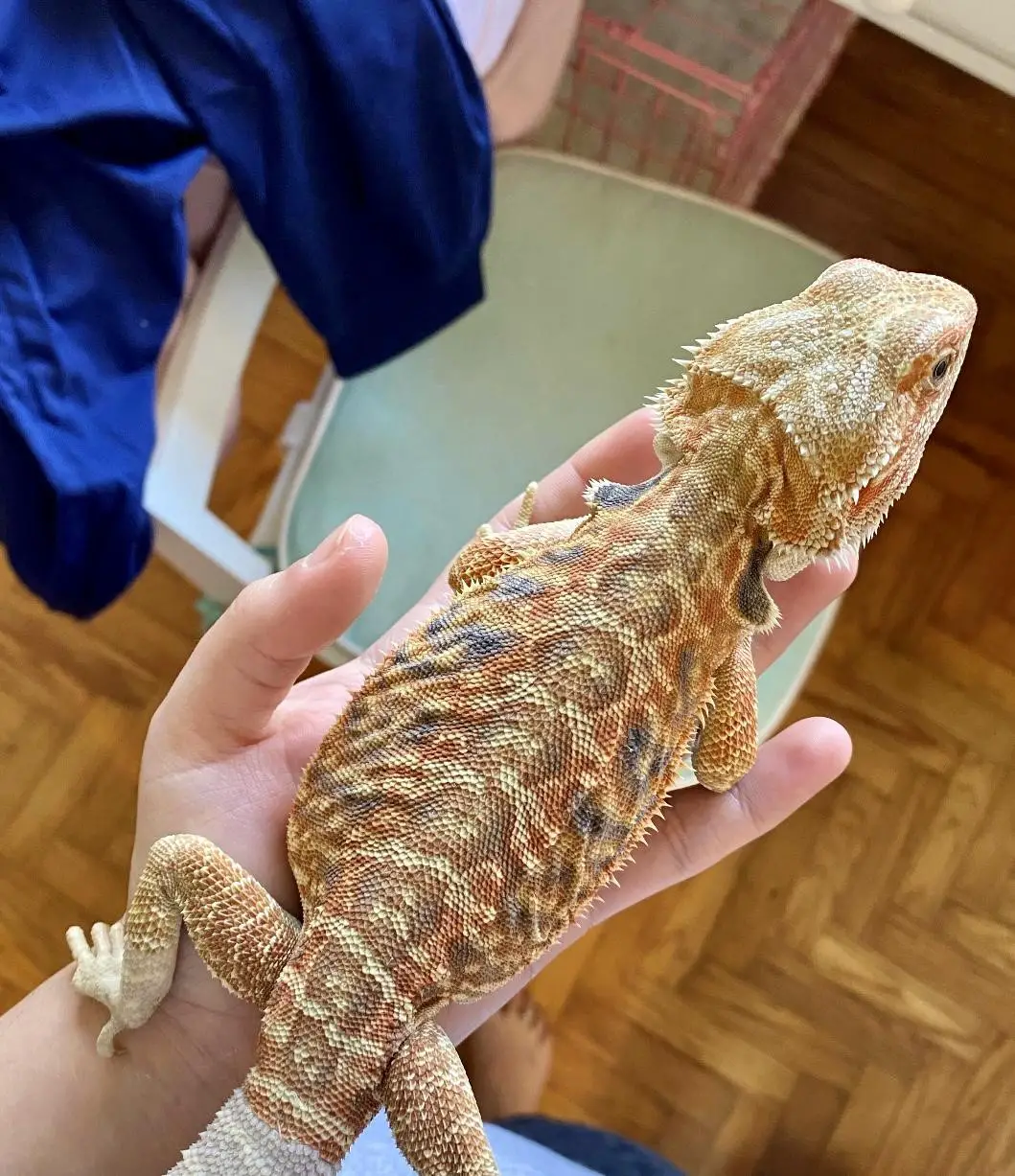
Leatherback is another popular bearded dragon trait. Unlike a standard bearded dragon, leatherback’s don’t have as many scales. This gives them a unique look and smoother back.
Keep in mind leatherback is simply a genetic trait and not a morph. Thus, you can find blue leatherback bearded dragons for sale.
Paradox
Paradox is another popular bearded dragon trait. Unlike standard bearded dragons with symmetrical patterns, bearded dragons with the paradox gene have random blotches of color.
Paradox bearded dragons may contain blue coloring. However, unlike a standard blue bearded dragon with symmetrical blue patterning on its back, the blue coloration will be found randomly across its body.
Are Blue Bearded Dragons Real?
Now that you’ve made it this far, you know that blue bearded dragons exist, but they’re never completely blue. There are plenty of pictures of blue beardies on Google that are Photoshopped to make them appear entirely bright blue, which is impossible.
However, bearded dragons can have blue patches of coloring on their bodies. These bearded dragons are known as blue bar and are highly sought after in the reptile community.
We hope you learned something new today and perhaps motivated you to look into buying your next reptile. If so, be sure to check out our numerous articles on the best bearded dragon care practices!
